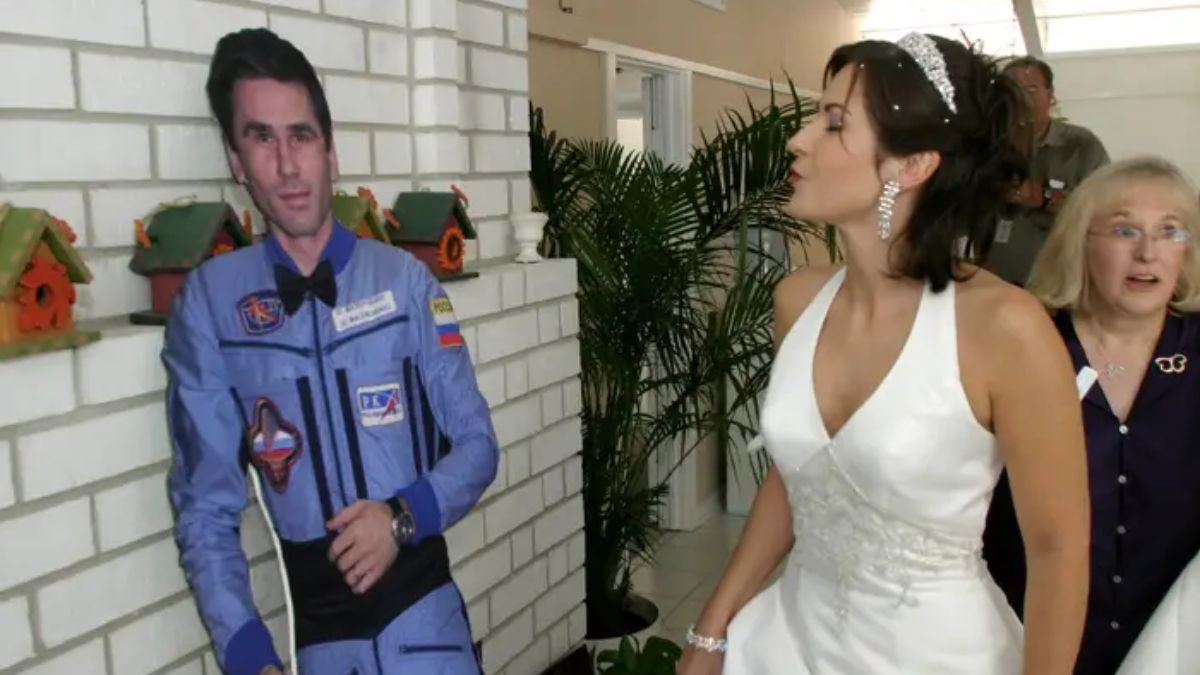History was created on August 10, 2003, when the Russian cosmonaut Yuri Malenchenko became the first person to get married while in space. The unique wedding ceremony took place while Malenchenko was orbiting Earth aboard the International Space Station (ISS), some 240 miles above New Zealand.
If you are a history geek who loves to learn about important events from the past, Firstpost Explainers’ ongoing series, History Today , will be your one-stop destination to explore key events.
First person to get married while in space
Russian cosmonaut Yuri Malenchenko became the first person to get married while in space on August 10, 2003. Orbiting Earth on the International Space Station (ISS), he exchanged vows via satellite with his bride, Ekaterina Dmitrieva. She stood on solid ground at Nasa’s Johnson Space Centre in Texas.
The wedding was a blend of tradition and cosmic novelty. Dmitrieva wore a classic white wedding gown, processed down the aisle to David Bowie’s ‘Absolute Beginners,’ and posed beside a life-size cardboard cutout of her groom. Up in orbit, Malenchenko donned a bow tie atop his flight suit, and astronaut Ed Lu, acting as best man, played the wedding march on a small keyboard aboard the ISS.
Texas law allowed the ceremony to proceed despite one party’s physical absence, with a proxy standing in for Malenchenko during the legal process. The ceremony was emotionally resonant, which Dmitrieva later described as “celestial, soulful,” while guests exchanged smiles and kisses through the video link.
Yet the wedding wasn’t without controversy. Russian authorities initially objected, citing rules that barred active officers from marrying foreign nationals while in space. They were ultimately overruled, but the event prompted Roscosmos to ban space marriages in future mission contracts.
King Louis XVI was arrested
On this day in 1792, King Louis XVI of France was officially arrested after a violent uprising in Paris, marking a crucial turning point in the French Revolution. The monarchy, already under intense scrutiny and losing popular support, faced its downfall when thousands of revolutionaries stormed the Tuileries Palace, where the royal family resided.
Amid rising tensions, Parisians, outraged by the king’s vetoes, the dismissal of pro-revolution ministers, and his perceived ties to foreign powers, took to the streets. Armed National Guards, Sans-culottes, and radical citizens attacked the palace, leading to a bloody confrontation with royalist Swiss Guards. The violence left nearly 1,000 people dead, including hundreds of defenders loyal to the king.
Louis XVI and his family fled to the nearby National Assembly, seeking protection. But instead of sanctuary, they were effectively taken into custody. The Legislative Assembly suspended the king’s powers and declared him a prisoner of the nation. He was transferred to the Temple prison, along with Queen Marie Antoinette and their children, under increasingly harsh conditions.
The events of August 10 shattered the illusion that a constitutional monarchy could survive the revolution. It set the stage for the abolition of the monarchy and the birth of the French Republic just weeks later.
This Day, That Year
On this day in 1914, France declared war on Austria-Hungary in World War I.
The Louvre Museum opened in Paris in 1793.
)